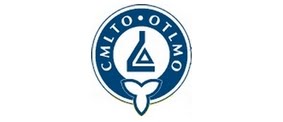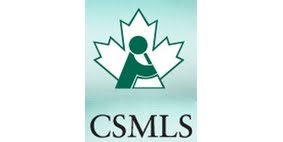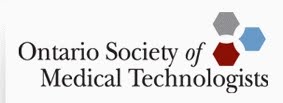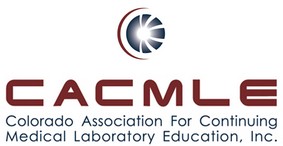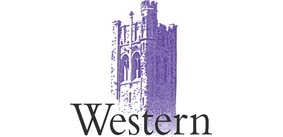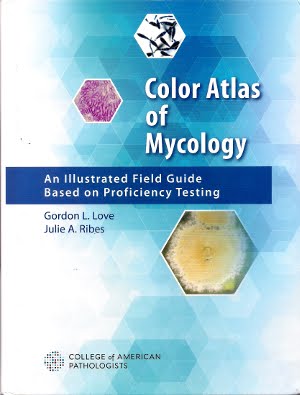Common and Alternative Stains for Viewing Moulds &Yeast
While cleaning out some files, I came across a number of microphotographs which might be of interest to the reader. Most of my posts show the organism in question after it has already been isolated and not how it may first clue the microscopist/technologist that an organism is present in a specimen. A few photos of specimens containing fungi follow below.
I worked on some of these specimens personally while others were brought to my attention by colleagues in the microbiology or histology laboratories. For those I did not work on personally, I have few specifics such as the final identification.
Yeast cell producing pseudohyphae in a sputum specimen. Numerous white blood cells present.
(1000X, Gram Stain,
Nikon)
Numerous yeast cells, many budding, along with other bacteria in this sputum sample. A large epithelial cell is seen in the lower left.
(1000X, Gram Stain, Nikon)
Several yeast cells seen along the center of this sputum specimen photo. This sample also grew Streptococcus pneumoniae (pneumococcus) and Haemophilus influezae. White blood cells (wbc) and epithelial cells also present as one might expect.
(1000X, Gram Stain,
Nikon)
Several individual yeast cells and the long pseudohyphae present seen in a vaginal swab specimen. Epithelial cells and commensal bacteria also present.
(1000X, Gram Stain, Nikon)
Yeast pseudohyphae in a kidney aspirate.
(1000X, Gram Stain, Nikon)
Another view (as above) of the yeast peudohyphae in the kidney aspirate, criss-crossing the photo.
(1000X, Gram Stain,
Nikon)
Rather elongate yeast cell(s) in a blood culture. Identification was not noted.
(500X, Gram Stain, Nikon)
Candida parapsilosis in a blood culture.
(1000X, Gram Stain, Nikon)
Another photo as above - budding Candida parapsilosis in a blood culture.
(1000X, Gram Stain, Nikon)
This bizzare looking structure was from a direct gram stain of a blood culture and grew Candida albicans. It appears as if the yeast cells became clumped in this material (?) and were producing pseudohyphae seen as the 'branches' protruding outwards.
Another view as above. Pseudohyphae protruding from material clumped together in a blood culture.
(400X, Gram Stain, DMD-108)
Fungal conidium germinating in an ear. Two true hyphae can be seen extending from the conidium. Single epithelial cell seen in upper center.
(400+10X, Gram Stain, DMD-108)
Another photo of the ear swab (as above), here showing the dichotomous branching of the fungal hyphae. Septations within the hyphae are visible.
(400X, Gram Stain, DMD-108)
...And yet one more as above.
Fungus present in the gram stain from a nasal aspirate. This isolate was identified subsequently identified as Aspergillus flavus.
(1000X, Gram Stain, DMD-108)
Another photo of the nasal aspirate showing the fungal hyphae. Gram's crystal violet stain is strongly retained in this preparation resulting in the intense dark colour.
(1000X, Gram Stain, DMD-108)
I took several photos of this structure yet all seem to be somewhat out of focus. This appears to be the intact 'fruiting head' of an
Aspergillus species as seen in the direct preparation of a broncheal wash. (1000X, Gram Stain,
Nikon)
Here we have a fungus (dermatophyte) seen in an unstained nail preparation. The nail specimen is covered with 10% potassium hydroxide (KOH) which both softens & clarifies the nail for enhanced viewing as well as kills the fungus for safety.
(400X, 10% KOH, DMD-108)
Unspecified tissue containing fungal hyphae (arrows)
(400X, 10% KOH, DMD-108)
Aspergillus fruiting structure and dispersed conidia. The inset is from another photo of the same structure at an alternate focus. I believe this specimen was from a brocheal specimen.
(Specifics not noted, Nikon)
Fungus in a tissue sample. This histological section shows the hyphae sliced along their length (L=Longitudinal), as well as across their diameter (T=Transverse)
(1000X, Periodic Acid Schiff, Nikon)
Fungal elements seen in this histological specimen appear black against the green counterstain.
(1000X, Gomori Silver Stain,
DMD-108)
Another tissue sample with fungal elements as above.
(1000X, GMS, DMD-108)
Cryptococcus neoformans in a blood culture. This direct stain shows the large capsule which surrounds the yeast cell of C.neoformans.
(1000X, Gram Stain, Nikon)
Cryptococcus neoformans again in the blood culture as above. Again, material surrounding the yeast cell clearly shows the capsule that surrounds the organism.
(1000X, Gram Stain,
Nikon)
* * *


























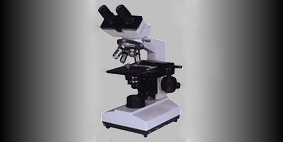.jpg)
